#the 1975 zine
Explore tagged Tumblr posts
Text
Last two are reblogged!










#the 1975#still… at their very best#the 1975 zine#ross macdonald#polly money#matty healy#john waugh#adam hann
70 notes
·
View notes
Text
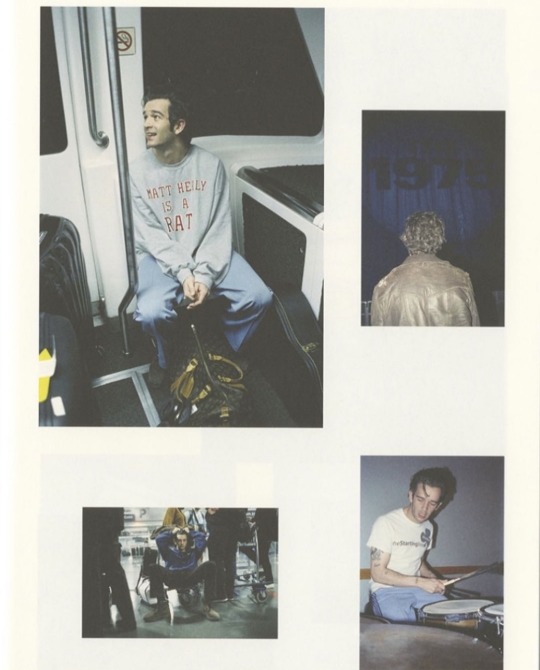
I wish I got my hands on a zine
#matty the 1975#truman black#matty healy#still… at their very best#the 1975#still… at his very best#being funny in a foreign language#a brief inquiry into online relationships#notes on a conditional form#zine#ratty healy#ratty matty#george daniel#adam hann#ross macdonald#era: bfiafl
91 notes
·
View notes
Text

they are all so fucking beautiful
121 notes
·
View notes
Text
Zines :)

A/N: this has nothing to do with anything. After today’s debacle, I remembered that I used to work at a place that made zines years ago. Wanted to dig more into their history etc. this is for anyone who is interested.
What are zines?
Self-published, DIY fan magazines (zines for short) made often using basic materials like a copy machine and paper.
Where do they come from?
Primarily, fan culture! A way to distribute fan art, writing, etc in small circulation. Though they can also often include original work, pictures, etc.
They were very popular in amateur science fiction communities in the 1950s and 60s.
Often made by hand, using carbon paper to make copies, it is a way to distribute art and ideas and connect with people beyond your immediate surroundings.
Their content can be wide ranging. From comic strips, art, to feminist theory!
Where The 1975 draws from
DIY subcultures are largely intertwined with the Punk scene. So I imagine that’s what the boys were exposed to. Also, Matty is known to collect zines from the 70s. That’s when zines were most popular in the UK, actually.
However I’d note that what the boys call a “zine” is def more high maintenance than what it originally meant to DIY zines!
24 notes
·
View notes
Text


Oh the sequel just dropped huh 🎀🥰💫✨💘
70 notes
·
View notes
Text





the 1975 SATVB NA tour zine 🥾🌎
#aesthetic#the 1975#tumblr girls#matty 1975#matty healy#ross macdonald#adam hann#george daniel#satvb#atvb#tumblr 2014#tour#concert#zine#music#indie#girlblog#girlblogging#girlblogger#lana del rey#girl blogger
20 notes
·
View notes
Text
Zigzag Magazine - 75 issues (so far) (Magazines, 1969-1978)
You can read them here. Vintage issues from throughout its 1969-1986 run can be purchased here.




#internet archive#zine#zines#magazine#magazines#vintage magazine#vintage magazines#old magazines#rock magazine#rock#rock music#rock history#rock n roll#rock and roll#1969#1970#1971#1972#1973#1974#1975#1976#1977#1978#1960s#60s#1970s#70s
8 notes
·
View notes
Text

NORTH AMERICA ZINE FT PEANUT FT GORGEOUS MATTY HAIR
16 notes
·
View notes
Text

Japan on Film 01//2022
#so glad they posted this picture#I freaking loved it when I saw in the Japan zine#ugh they all look so good#the 1975#ross macdonald#george daniel#matty healy#adam hann#icbmil*#instagram
21 notes
·
View notes
Text
I'm so sad that I couldn't get a satvb zine. I was in a meeting when it was announced and it was already sold out before my meeting was done. I'm so devastated too because i'm such a film photography nerd.
#but like if anyone has an extra one I'll pay you for it plus shipping 👉👈#and be forever thankful#I hate my job sometimes#makes me miss everything#satvb zine#the 1975#ry.exe#personal
1 note
·
View note
Text


#zine#matty healy#adam hann#truman black#matty the 1975#the 1975#still… at his very best#still… at their very best#being funny in a foreign language#hiatus
27 notes
·
View notes
Text
the 1975 still...at their very best NA tour zine
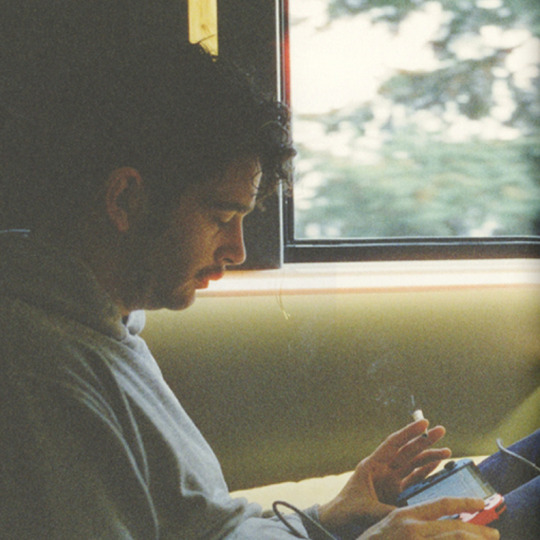

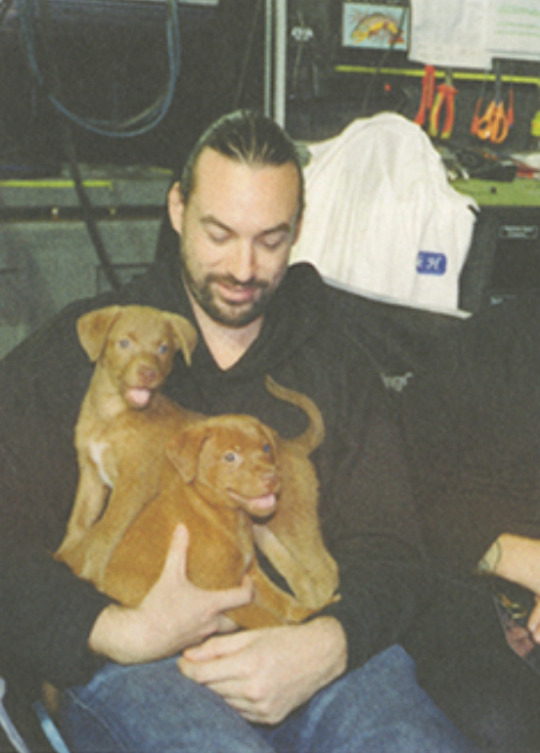
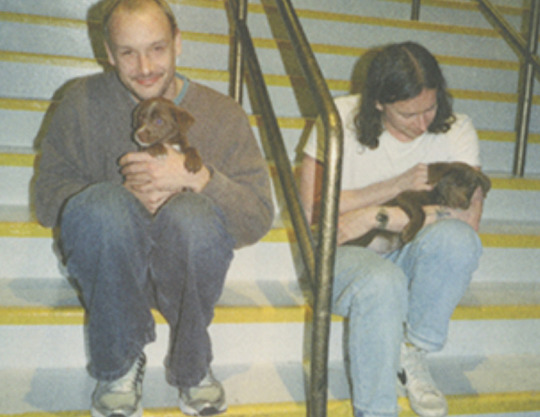
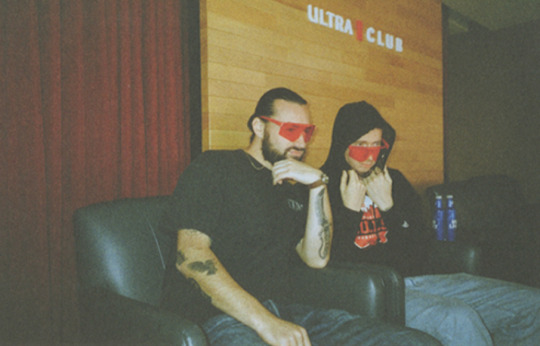
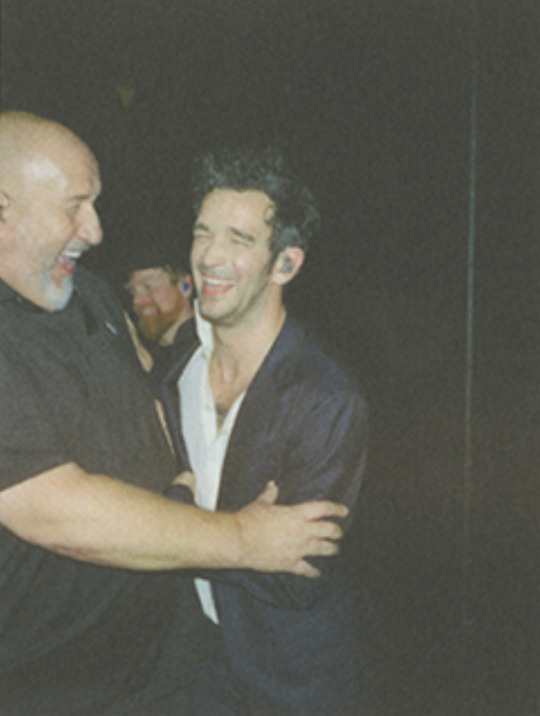

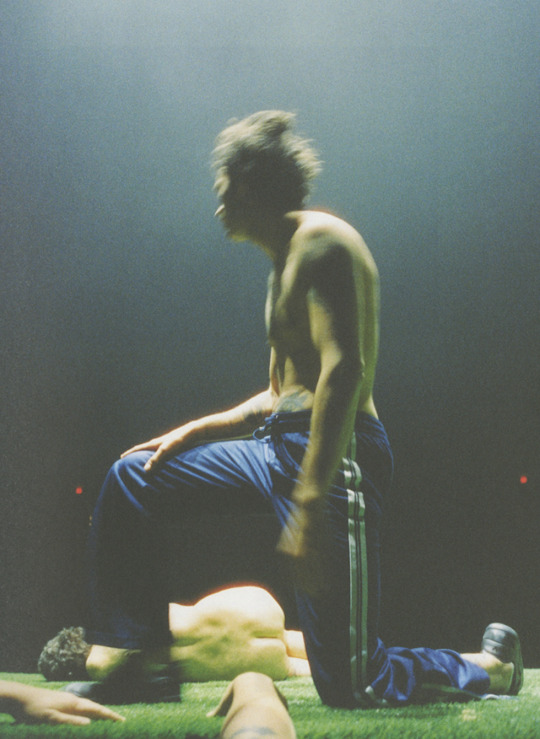
#the 1975#matty healy#george daniel#adam hann#ross macdonald#still at their very best#satvb#still... at their very best#at their very best#atvb#iliwys#iliwysfyasbysuoi#noacf#abiior#bfiafl#notes on a conditional form#a brief inquiry into online relationships#being funny in a foreign language#i like it when you sleep for you are so beautiful yet so unaware of it#truman black
103 notes
·
View notes
Text
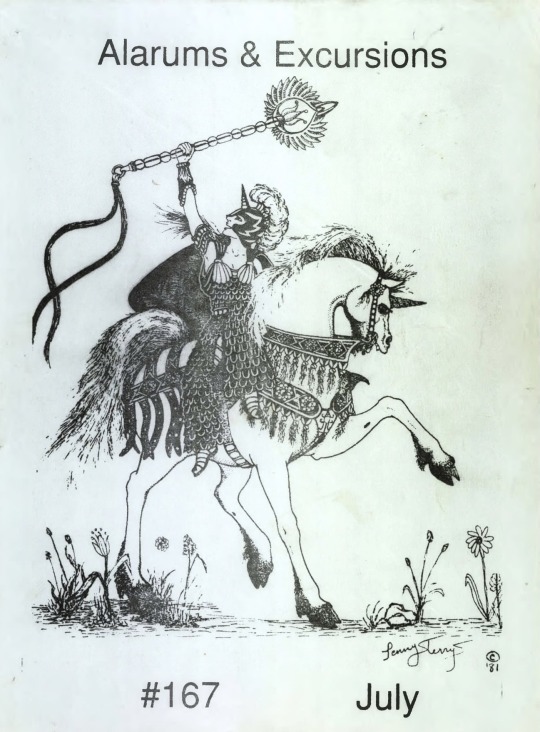
Penny Terry cover for Alarums & Excursions 167, July 1989 — At last count the influential D&D zine has published 580 issues, from 1975 through March 2024.
#D&D#Dungeons & Dragons#Penny Terry#Alarums & Excursions#zine#dnd#unicorn#Dungeons and Dragons#1980s
130 notes
·
View notes
Text
Hey check this out
I was making a zine (solarpunk ofc) and decided to use a bunch of old National Geographic magazines to cut up and use in a scrappy diy scrapbook fashion and of course I started reading them. This one in particular:
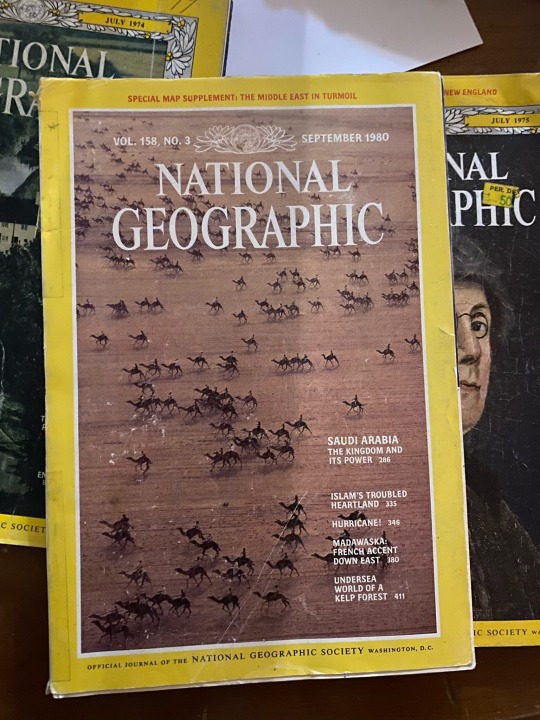
It caught my eye because it’s from September 1980 & talks about the Middle East. My brain wonders if they mention Palestine and they do! I copied the text for accessibility, but I put pictures at the end of the original pages.
“Jerusalem: reunited or occupied? The question has divided the city's 400,000 Jews and 100,000 Arabs since Israel annexed East Jerusalem in 1967.
BEIRUT, JANUARY 1975. Armed soldiers lead me through labyrinthine back streets, up a dark stairway to a midnight rendez-vous. Only a bare bulb lights the temporary command post; Yasir Arafat, chairman of the Palestine Liberation Organization, seldom dares spend two days in the same place. “Our argument is not with the Jews” He tells me. "We are both Semites. They have lived with us for centuries. Our enemies are the Zionist colonizers and their backers who insist Palestine belongs to them exclusively.
We Arabs claim deep roots there too."
Two decades ago Palestinians were to be found in United Nations Relief Agency camps at places like Gaza and Jericho, in a forlorn and pitiable state. While Palestinian spokesmen pressed their case in world cap-itals, the loudest voice the world heard was that of terrorists, with whom the word Palestinian came to be associated. Jordan fought a war to curb them. The disintegration of Lebanon was due in part to the thousands of refugees within its borders.
Prospects for peace brightened, however, when President Anwar Sadat of Egypt, most powerful of the Arab countries, made his historic trip to Israel in November 1977. A year later Sadat and Israeli Prime Minister Menachem Begin signed the Camp David accords, a framework for the return of the occupied Sinai Peninsula to Egypt.
The former enemies established diplomatic relations and opened mail, telephone, and airline communications.
The Camp David accords also addressed the all-important Palestinian question but left it vague. Sadat insists that any lasting peace depends on an eventual Palestinian homeland in the Israeli-occupied West Bank and Gaza. Israel agrees to limited autonomy for those regions, but, fearful of a new and hostile Palestinian state suddenly planted on its borders, insists that Israeli troops must maintain security there.
Crowded Rashidiyah refugee camp, set among orange groves south of the ancient Phoenician port of Tyre in Lebanon, lies on the front lines. Frequent pounding by Israeli military jets and warships seeking PLO targets has war-hardened its population, some 13,700 Palestinians.
At the schoolyard I watched a solemn flag raising. Uniformed ashbal, or lion cubs, stood rigid as color guards briskly ran up the green-white-and-black Palestinian flag.
Ranging in age from 8 to 12, they might have been Cub Scouts— except for the loaded rifles they held at present arms. Behind them stood two rows of girls, zaharat, or little flowers. Same age, same weapons.
Over lunch of flat bread, hummus, yo-gurt, and chicken I commented to my hosts, a group of combat-ready fedayeen, that 30 years of bitter war had settled nothing nor gained the Palestinians one inch of their homeland. Was there no peaceful way to press their cause?
"Yes, and we are doing it. Finally, after 30 years, most countries in the United Nations recognize that we too have rights in Palestine. But we feel that until your country stops its unconditional aid to Israel, we have two choices: to fight, or to face an unmarked grave in exile."
AFTER CROSSING the Allenby Bridge from Amman, I drove across the fertile Jordan Valley through Arab Jericho and past some of the controversial new Jewish settlements: Mitzpe Jericho, Tomer, Maale Adumim, Shilat. Then as I climbed through the steep stony hills to Jerusalem, I saw that it too had changed. A ring of high-rise apartments and offices was growing inexorably around the occupied Arab side of the walled town. Within the wall, too, scores of Arab houses had been leveled during extensive reconstruction.
"Already 64 settlements have been built on the West Bank," said a Christian Palestinian agriculturist working for an American church group in Jerusalem. "And another 10 are planned," he said. Unfolding a copy of the master plan prepared in 1978 by the World Zionist Organization, he read: "Real-izing our right to Eretz-Israel... with or without peace, we will have to learn to live with the minorities...
The Israeli Government has reaffirmed the policy. In Prime Minister Menachem Begin's words: "Settlement is an inherent and inalienable right. It is an integral part of our national security."
"Security" is a word deeply etched into the Israeli psyche. The country has lived for 30 years as an armed camp, always on guard against PLO raids and terrorist bombings.
Whenever such incidents occur, the response is quick: even greater retaliation.
In Jerusalem I met with David Eppel, an English-language broadcaster for the Voice of Israel. "We must continue to build this country. Israel is our lawful home, our des-tiny. We have the determination, and an immense pool of talent, to see it through." His cosmopolitan friends a city plan-ner, a psychology professor, an author gathered for coffee and conversation at David's modern apartment on Jerusalem's Leib Yaffe Road.
Amia Lieblich's book, Tin Soldiers on Jerusalem Beach, studies the debilitating effects almost constant war has had on life in the Jewish state, a nation still surrounded by enemies. As she and her husband kindly drove me to my hotel in Arab Jerusalem afterward, some of that national apprehension surfaced in the writer herself.
"We don't often come over to this part of town," she said. "Especially at night."
I DROVE OUT of the Old City in the dark of morning and arrived a few hours later at the nearly finished Israeli frontier post, whence a shuttle bus bounced me through no-man's-land to the Egyptian ter-minal. As a result of the Egyptian-Israeli treaty, it was possible for the first time since 1948 to travel overland from Jerusalem to Cairo. An Egyptian customs man opened my bags on a card table set up in the sand. I took a battered taxi into nearby El Arish, to a sleepy bank that took 45 minutes to convert dollars into Egyptian pounds, Then 1 hired a Mercedes for the
200-mile run across the northern Sinai des-ert, the Suez Canal, and the Nile Delta. By sundown Cairo was mine.
Despite official government optimism, I found many in Cairo worried that President Sadat's bold diplomatic gestures might fail.
The city was noticeably tense as Israel officially opened its new embassy on Mohi el-Din Abu el-Ez Street in Cairo's Dukki quarter. Black-uniformed Egyptian troops guarded the chancery and nearby intersections as the Star of David flew for the first time in an Arab capital. Across town, police with fixed bayonets were posted every ten feet around the American Embassy. Others were posted at the TV station and the larger hotels. Protests were scattered, mostly peaceful. None disturbed the cadence of the city.
Welcoming ever larger delegations of tourists and businessmen from Europe and the U.S., Cairo was busier than ever-and more crowded. Despite a building boom, many Egyptians migrating from the countryside, perhaps 10,000 a month, still find housing only by squatting among tombs at the City of the Dead, the huge old cemetery on the southeast side of the capital.
Even with the new elevated highway and wider bridge across the Nile, half-hour traffic standstills are common. Commuters arrive at Ramses Station riding even the roofs of trains, then cram buses until axles break.
Cairo smog, a corrosive blend of diesel fumes and hot dust from surrounding des-erts, rivals tear gas.
Despite the rampant blessings of prog-ress, Cairo can still charm. In the medieval Khan el-Khalili bazaar near Cairo's thousand-year-old Al-Azhar University, I sought out Ahmad Saadullah's sidewalk café. I found that 30 piasters (45 cents) still brings hot tea, a tall water pipe primed with tobacco and glowing charcoal, and the latest gossip. The turbaned gentleman on the carpeted bench opposite was unusually talk-ative; we dispensed with weather and the high cost of living and got right to politics:
"Of course I am behind President Sadat, but he is taking a great risk. The Israelis have not fully responded. If Sadat fails, no other Arab leader will dare try for peace again for a generation."
Across town at the weekly Akhbar El-Yom newspaper, one of the largest and most widely read in the Middle East, chief editor Abdel-Hamid Abdel-Ghani drove home that same point.
"What worries me most is that President Sadat's agreement with Israel has isolated Egypt from our brother nations," he told me. "When Saudi Arabia broke with us, it was a heavy loss. The Saudis are our close neighbors. Now they have canceled pledges for hundreds of millions in development aid to Egypt. Some 200,000 Egyptians-teach-ers, doctors, engineers live and work in the kingdom.
"And Saudi Arabia, guardian of the holy cities of Mecca and Medina, remains for Muslim Egypt a spiritual homeland."

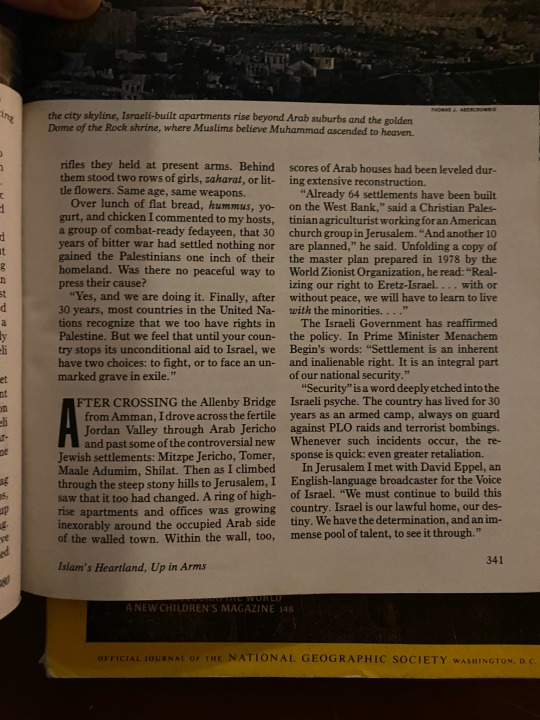
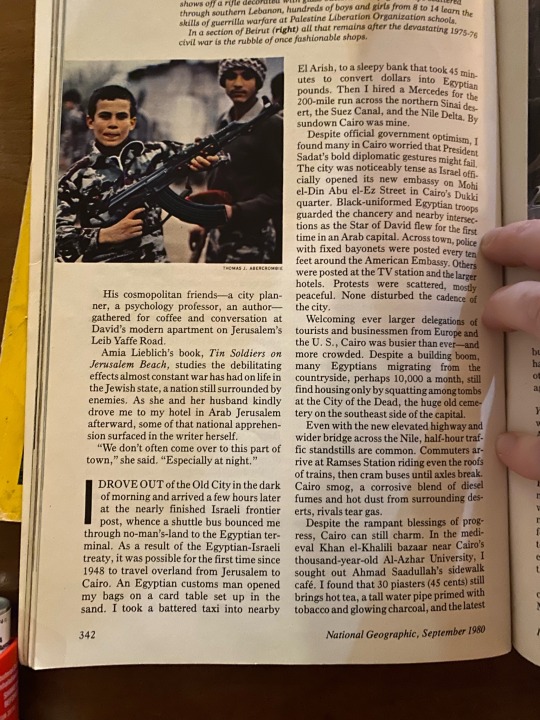
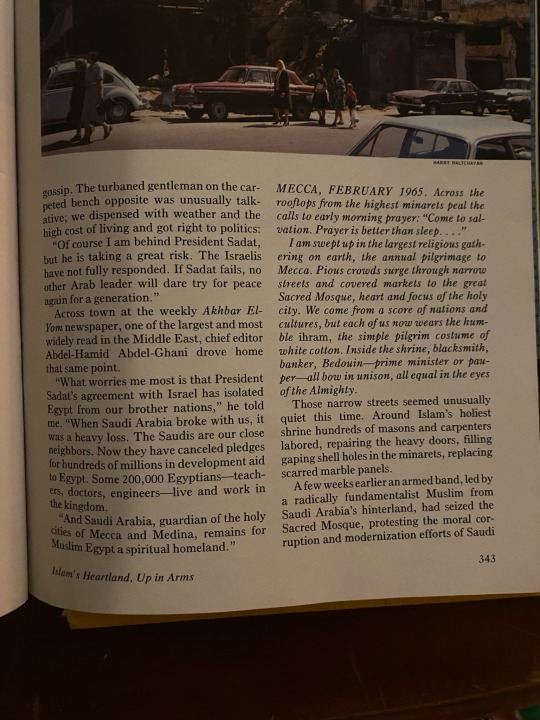
This magazine was published before my mom was born, and yet the sentiments have basically unchanged. An interesting look at the past, and more proof this didn’t start October 7th. (But imagine my followers already knew that)
#Palestine#free palestine#from the river to the sea palestine will be free#national geographic#September 1980
58 notes
·
View notes
Text
Chris Skelton tribute Zine
!CALLING ALL CHRIS SKELTON FANS!



For many, next Valentine's day will be a day for celebrating love and relationships and all things romantic... however for those of us in the know, the 14th of February means something quite different...
Next Valentine's Day, 2025, will mark 50 years since one Christopher Daniel Skelton was killed in the line of duty in 1975, and sent to purgatory to work for Gene Hunt. To mark this special occasion, I'd had it in mind to put together some sort of tribute to a character who's come to be important to me, and other fans of LoM/A2A too.
I'd love to put together a zine dedicated to Chris. I'm opening it up for fandom collaboration because I'm super inspired by fan-projects of the past, including the Ashes to Ashes commemorative fanzine '9;06' from back in the day, and I think it could be really fun, and I've seen so much cool creativity in this fandom!
Submissions could include fanart, fanfic, comics, poetry, non-fiction writing or still-image edits! I'd like this project to be super accessible, and as a very lo-fi digital-only free publication, no submission is too small, and you can submit as many things as you'd like. It's about celebrating a fictional character and what he means to each of us, however we want! go serious, go silly, and have fun! the result would be a downloadable PDF, with copy also published to Ao3.
The submission deadline is the 1st February, giving me (and anyone else who wanted to be involved with editing) two weeks to compile and finalise the Zine for a release date of the 14th February 2025: that's exactly two months from now, (1st December) hence the announcement today. Compared to big for-sale zines that's not very long, but as I said I want this to be a casual, accessible project.
I'd be putting together my own tribute regardless, but I wanted to open it up for community collaboration because I think it could be really fun, and from what I've seen, I recon there's others here with an appreciation for Chris and and a creative flare.
For any and all ideas, discussion and submissions, use the hashtag #chris skelton zine. If you fancy, @ me too, as obviously I'd love to hear it. This is my first time ever organising something like this, so I'm not entirely sure what to expect. If this sounds cool, please also consider reblogging to spread the word as far as possible. :)

#what do you think?#chris skelton#chris skelton zine#ashes to ashes#a2a#ashes to ashes uk#life on mars uk#life on mars#lom#marshall lancaster#brill posting
17 notes
·
View notes
Text



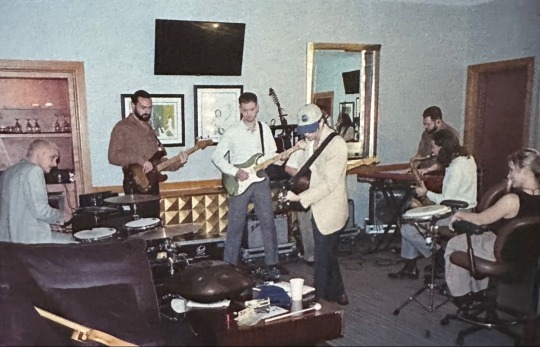
the 1975 tour zine
#matty healy#matty healy 1975#the 1975#trumanblack#love matty healy#the 1975 at their very best#george daniel
38 notes
·
View notes